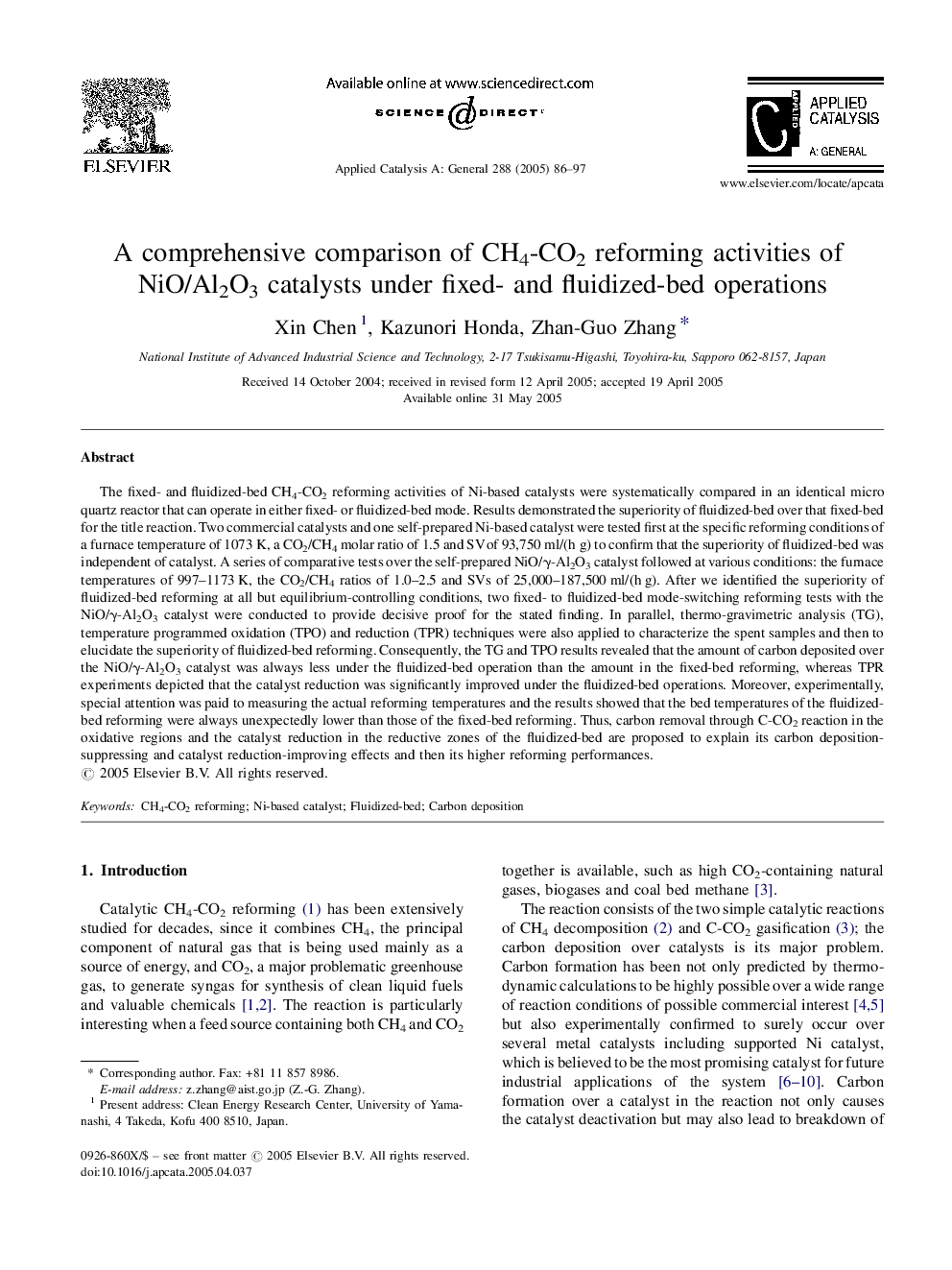| Article ID | Journal | Published Year | Pages | File Type |
|---|---|---|---|---|
| 9607919 | Applied Catalysis A: General | 2005 | 12 Pages |
Abstract
The fixed- and fluidized-bed CH4-CO2 reforming activities of Ni-based catalysts were systematically compared in an identical micro quartz reactor that can operate in either fixed- or fluidized-bed mode. Results demonstrated the superiority of fluidized-bed over that fixed-bed for the title reaction. Two commercial catalysts and one self-prepared Ni-based catalyst were tested first at the specific reforming conditions of a furnace temperature of 1073 K, a CO2/CH4 molar ratio of 1.5 and SV of 93,750 ml/(h g) to confirm that the superiority of fluidized-bed was independent of catalyst. A series of comparative tests over the self-prepared NiO/γ-Al2O3 catalyst followed at various conditions: the furnace temperatures of 997-1173 K, the CO2/CH4 ratios of 1.0-2.5 and SVs of 25,000-187,500 ml/(h g). After we identified the superiority of fluidized-bed reforming at all but equilibrium-controlling conditions, two fixed- to fluidized-bed mode-switching reforming tests with the NiO/γ-Al2O3 catalyst were conducted to provide decisive proof for the stated finding. In parallel, thermo-gravimetric analysis (TG), temperature programmed oxidation (TPO) and reduction (TPR) techniques were also applied to characterize the spent samples and then to elucidate the superiority of fluidized-bed reforming. Consequently, the TG and TPO results revealed that the amount of carbon deposited over the NiO/γ-Al2O3 catalyst was always less under the fluidized-bed operation than the amount in the fixed-bed reforming, whereas TPR experiments depicted that the catalyst reduction was significantly improved under the fluidized-bed operations. Moreover, experimentally, special attention was paid to measuring the actual reforming temperatures and the results showed that the bed temperatures of the fluidized-bed reforming were always unexpectedly lower than those of the fixed-bed reforming. Thus, carbon removal through C-CO2 reaction in the oxidative regions and the catalyst reduction in the reductive zones of the fluidized-bed are proposed to explain its carbon deposition-suppressing and catalyst reduction-improving effects and then its higher reforming performances.
Related Topics
Physical Sciences and Engineering
Chemical Engineering
Catalysis
Authors
Xin Chen, Kazunori Honda, Zhan-Guo Zhang,
